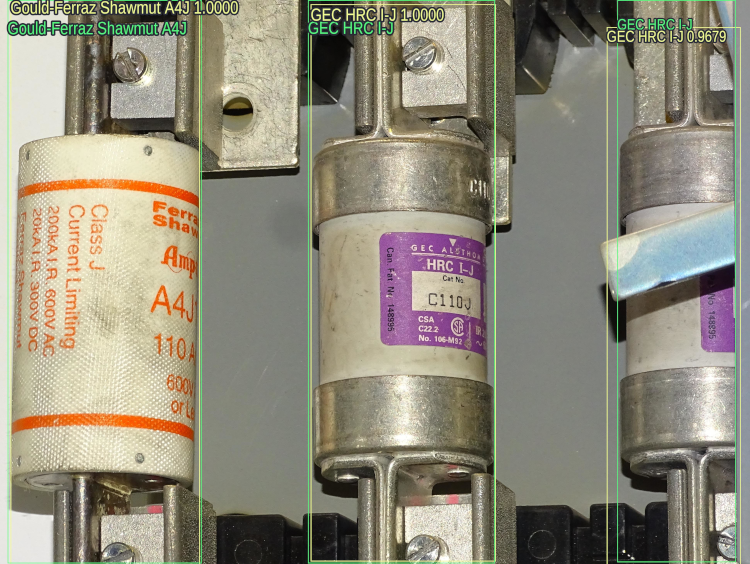In order to protect people and installations against arc flash, dangerous electrical explosions caused by short circuits, the experts at CIMA+ regularly conduct arc flash studies. These studies, however, are fairly lengthy and leave no margin for error. The consulting engineering firm has now successfully harnessed artificial intelligence (AI) to offset these problems. A fine example of engineering transformation in the era of Industry 4.0.
“Normally, to carry out studies like this, we have to start by taking hundreds of photos of the live electrical installations. Our engineers then have to interpret them, one by one, and manually enter the data in calculation and analysis software,” Jean-Hugues Lapointe, partner and project director at CIMA+, explains. The models obtained allow us to determine the actions required to protect facilities against arc flash, particularly in terms of safety equipment and security perimeters.
When Simon Giard-Leroux arrived at the firm in 2017, it was an incredible opportunity to further improve their methods. Highly computer literate – he has an excellent command of the VBA and Python languages among others things –, the electrical engineer devoted to network studies realized that these repetitive tasks could be performed by a computer. “The circuit breakers, fuses, transformers and other components of electrical installations have common characteristics, such as size and colour. That’s when the light bulb went on in my head: deep learning is a way of rapidly distinguishing these patterns, and to do so with a very low error rate,” he adds.
Goodbye status quo
Drawing on this intuition, the CIMA+ team, led by Simon Giard-Leroux, developed an applied research project in AI. Thanks to financial support from the Quebec government’s Innov-EE program, which funds innovation in the electricity industry, and an Alliance grant from the Natural Sciences and Engineering Research Council of Canada, the engineer began a Master’s degree in computer science at the Université de Sherbrooke (UdeS) in fall 2020. “This isn’t the first time we’ve established this type of research collaboration. We have always been close to the university community,” Jean-Hugues Lapointe points out.
Simon Giard-Leroux trained a network of millions of artificial neurons to detect objects on the images of electrical surveys themselves, and then automatically classify them according to their sub-categories. To do so, he manually annotated 3,200 anonymized photos of electrical surveys from the CIMA+ arc flash archives, as well as 1,100 similar photos from Google Images. The goal: to single out the fuses on the photos, of which there were over 12,000, and identify their class, ten in total, in order to guide the machine’s learning. In AI jargon, this is referred to as supervised learning.
Faced with images it hadn’t seen during the training, the tool was able to correctly identify and categorize 91% of them. These excellent results clearly illustrate how AI models can assist engineers in their day-to-day tasks and help prepare safer arc flash studies compared to traditional approaches. The results of Simon’s work were recently submitted for publication in the scholarly journal IEEE Transactions on Industrial Informatics. The scientific article will be co-authored by Martin Vallières, professor in the department of computer science at UdeS, who directed Simon Giard-Leroux’s work. “Martin is a specialist in the analysis of images of cancerous tumours. We both stepped out of our comfort zone with this project,” the young researcher says.

Multiple benefits
In the coming months, the tool Simon Giard-Leroux expertly developed will be implemented at CIMA+ and used in future arc flash studies. “This will enable us to reduce our operating costs, which will in turn make us more competitive on the market,” predicts Simon Giard-Leroux, who continued to work part-time for the firm during his post-graduate studies. There’s even talk of marketing the tool. “We believe many companies who hold extensive archives of photos of electrical equipment will be interested in it.”
One thing is certain: the AI expertise acquired as part of the project will be extremely useful to CIMA+ in the coming years. All the more so given that Simon Giard-Leroux’s Master’s degree studies are still ongoing – he should graduate at the end of 2022. “I’m also working on a tool for detecting symbols and links between various equipment on electrical plans. Ultimately, this tool should be able to automate the validation of plans from PDF and paper drawings, and even convert these plans into computer-interpretable versions,” he believes.